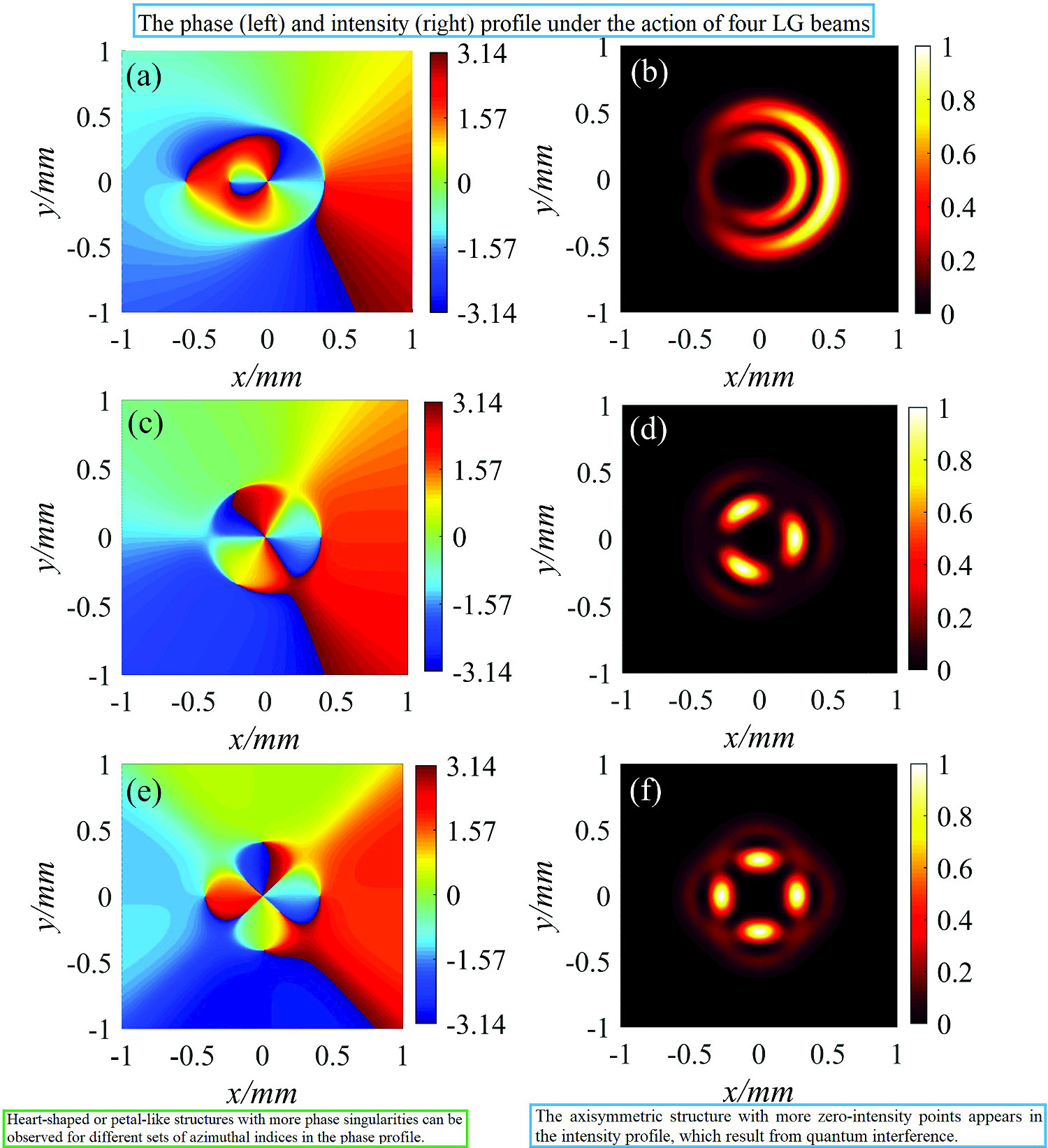https://doi.org/10.1140/epjd/s10053-023-00701-w
Regular Article – Optical Phenomena and Photonics
Manipulation of double-four-wave mixing in an atomic system under vortex-beam illumination
Hubei Key Laboratory of Optical Information and Pattern Recognition, Wuhan Institute of Technology, 430205, Wuhan, People’s Republic of China
d
clding2006@126.com
e
jrbqyj@gmail.com
Received:
7
January
2023
Accepted:
12
June
2023
Published online:
20
June
2023
Here we study systematically the double-channel four-wave mixing (FWM) processing in an atomic medium by adjusting azimuthal and radial indices (i.e., l and p) of the Laguerre–Gaussian (LG) beams in the presence and absence of an elliptically polarized beam. It is found that there are  periods of phase jumps from
periods of phase jumps from  to
to  as well as
as well as  raised phase surface and
raised phase surface and 
 convex rings in the phase profile of the FWM-generated field under the combined action of two LG beams and two circularly polarized components of the elliptically polarized light. In such a case, there are
convex rings in the phase profile of the FWM-generated field under the combined action of two LG beams and two circularly polarized components of the elliptically polarized light. In such a case, there are 
 concentric bright rings with a dark hollow center in the intensity distribution. However, the phase profile of the FWM field becomes twisted and displays petal-like structures under the action of four LG vortex beams. Compared with the situation of vortex and elliptically polarized beams illumination, the intensity pattern of the FWM field is distorted and multiple singularities occur at the transverse plane accompanied by zero-intensity regions. Our investigation shows the possibility of manipulating the intensity and phase profiles of the FWM-generated field, by purposely choosing appropriate azimuthal and radial mode indices of LG beams.
concentric bright rings with a dark hollow center in the intensity distribution. However, the phase profile of the FWM field becomes twisted and displays petal-like structures under the action of four LG vortex beams. Compared with the situation of vortex and elliptically polarized beams illumination, the intensity pattern of the FWM field is distorted and multiple singularities occur at the transverse plane accompanied by zero-intensity regions. Our investigation shows the possibility of manipulating the intensity and phase profiles of the FWM-generated field, by purposely choosing appropriate azimuthal and radial mode indices of LG beams.
Copyright comment Springer Nature or its licensor (e.g. a society or other partner) holds exclusive rights to this article under a publishing agreement with the author(s) or other rightsholder(s); author self-archiving of the accepted manuscript version of this article is solely governed by the terms of such publishing agreement and applicable law.
© The Author(s), under exclusive licence to EDP Sciences, SIF and Springer-Verlag GmbH Germany, part of Springer Nature 2023. Springer Nature or its licensor (e.g. a society or other partner) holds exclusive rights to this article under a publishing agreement with the author(s) or other rightsholder(s); author self-archiving of the accepted manuscript version of this article is solely governed by the terms of such publishing agreement and applicable law.





